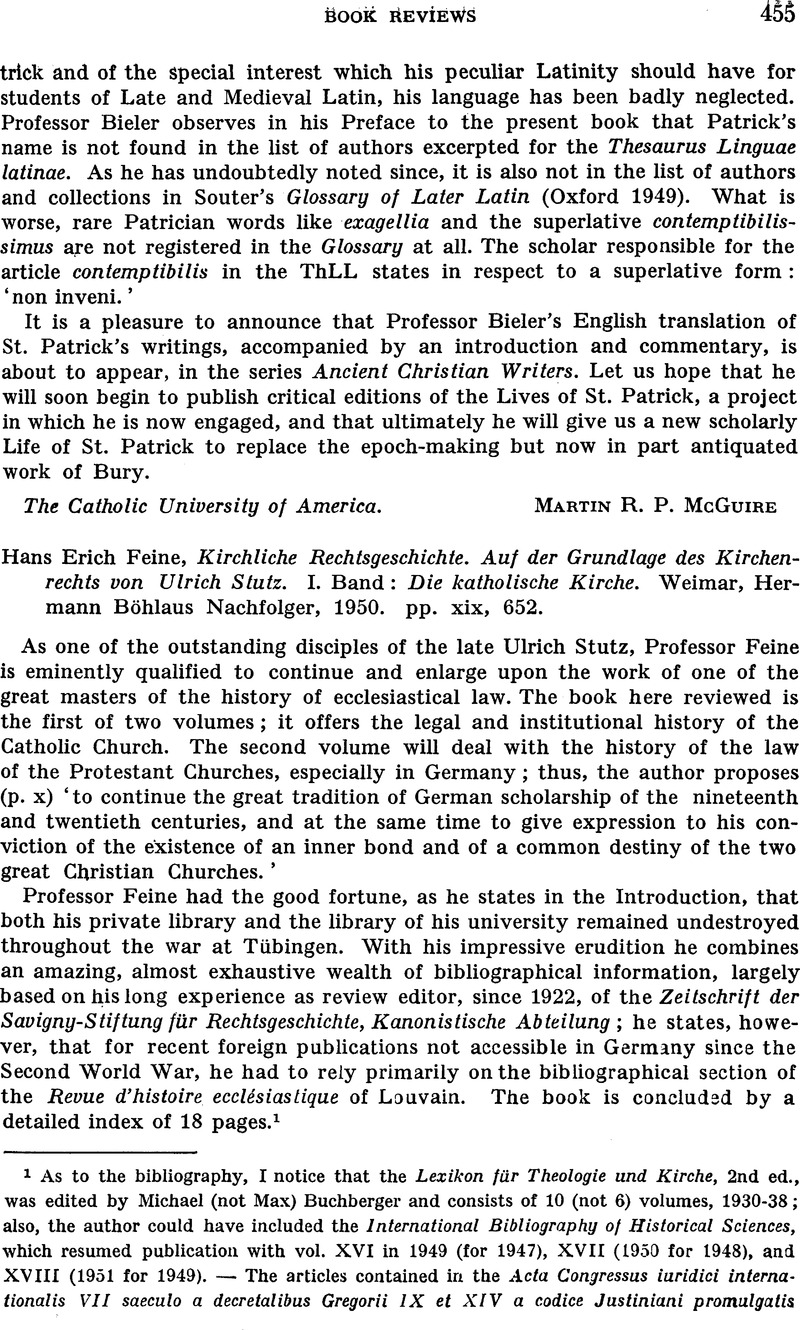No CrossRef data available.
Article contents
Hans Erich Feine, Kirchliche Rechtsgeschichte. Auf der Grundlage des Kirchenrechts von Ulrich Stutz. I. Band: Die katholische Kirche. Weimar, Hermann Böhlaus Nachfolger, 1950. pp. xix, 652.
Published online by Cambridge University Press: 29 July 2016
Abstract

- Type
- Book Reviews
- Information
- Copyright
- Copyright © Fordham University Press
References
1 As to the bibliography, I notice that the Lexikon für Theologie und Kirche, 2nd ed., was edited by Michael, (not Max) Buchberger and consists of 10 (not 6) volumes, 1930–38; also, the author could have included the International Bibliography of Historical Sciences, which resumed publication with vol. XVI in 1949 (for 1947), XVII (1950 for 1948), and XVIII (1951 for 1949). — The articles contained in the Acta Congressus iuridici internationalis VII saeculo a decretalibus Gregorii IX et XIV a codice Justiniani promulgates (Rome 1934 ff.) might have been cited, according to their individual contents, in the special bibliographies for the pertinent sections, since they deal not only with the period of the classical canon law, as it could appear from their inclusion in sec. 25 (p. 227). Cf. for instance the reviewer's article on ecclesiastical jurisdiction in penal matters in the Empire, Roman, Acta cit. I 411–79. — On p. 308 it would have been of value to cite Fournier, Paul, Les officialités au moyen âge (Paris 1880); on p. 379, Glasson, , Les rapports du pouvoir spirituel et temporel au moyen âge (Paris 1894), and the small but excellent volume, Chénon, E., Histoire des rapports de l'église et de l'état du I er au XX e siècle (Paris 1913). — In the Index, one misses e.g. entries for King Louis IX of France, Halitgar of Cambrai, Hrabanus Maurus, Theodore of Canterbury.Google Scholar
2 Two important characteristics of the Tridentine form of marriage (decree Tametsi) — viz. the fact that only the parochus proprius was authorized to assist (personal principle) and that his assistance was valid even if obtained by force (principle of passive assistance) — are touched upon only at p. 617, where the author discusses the reforms of 1906 (decree Ne temere: territorial principle and active assistance). It should also be pointed out that Ne temere required an assistentia activissima (‘… invitatus ac rogatus ‘), and only since the Code of 1917 the simple, active assistance is sufficient (can. 1095 n° 3).Google Scholar
3 The repeal, for France, of Unam sanctam by Clement V in the bull Meruit (1306) should have been mentioned on p. 375.Google Scholar




